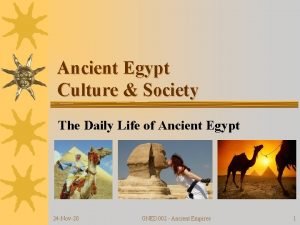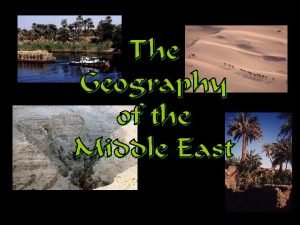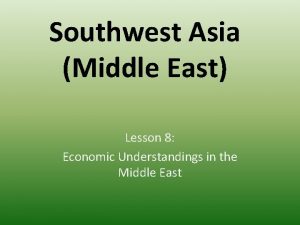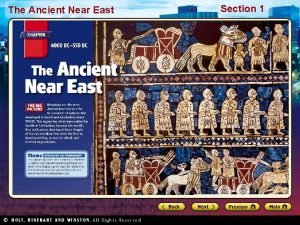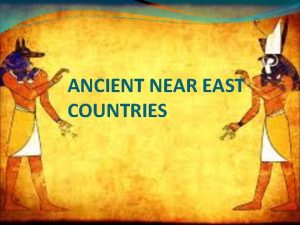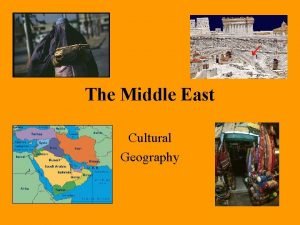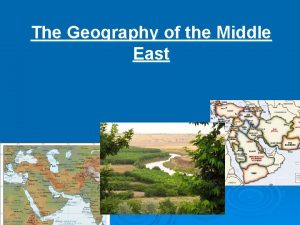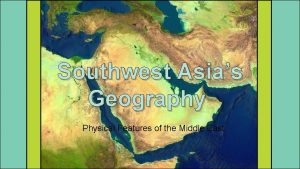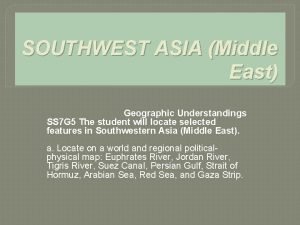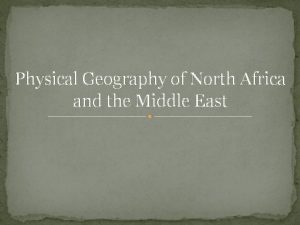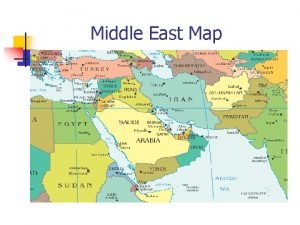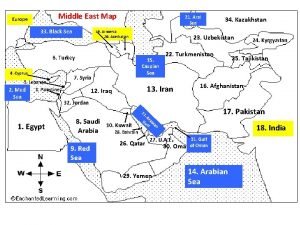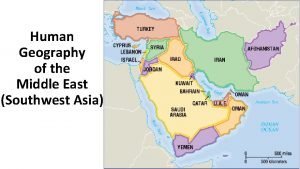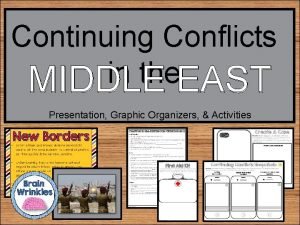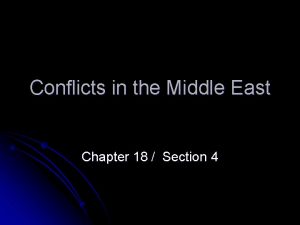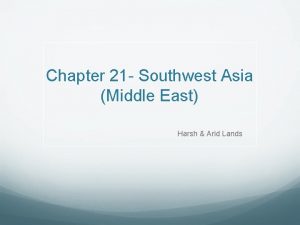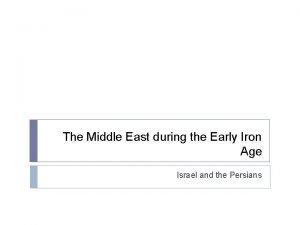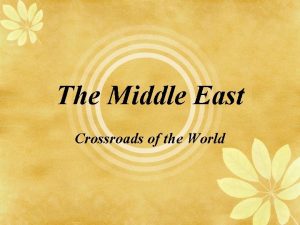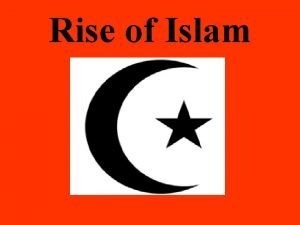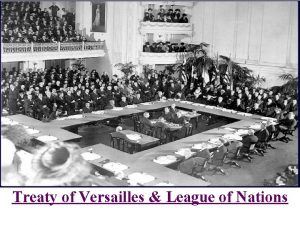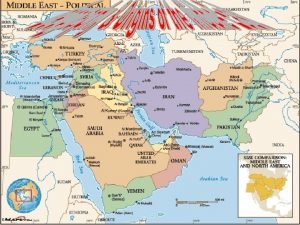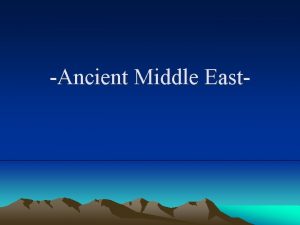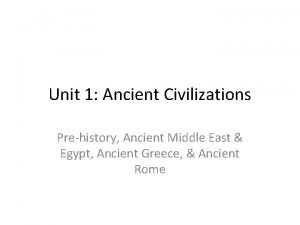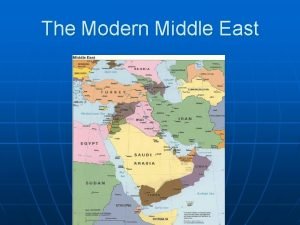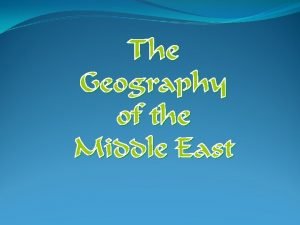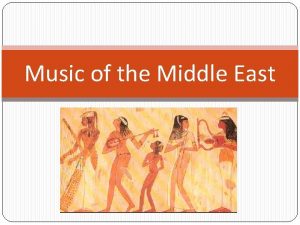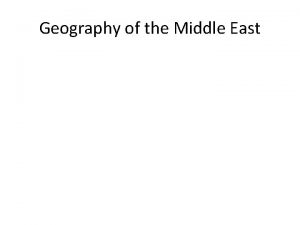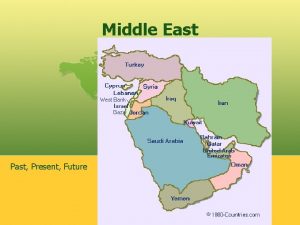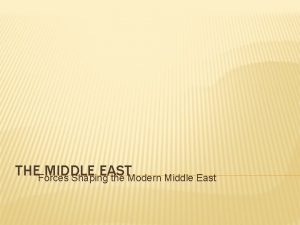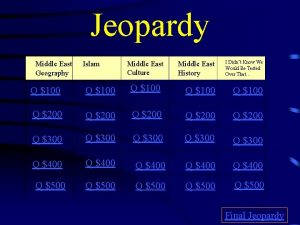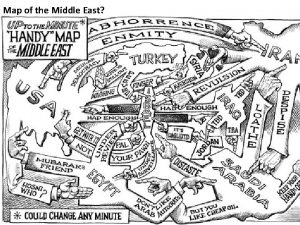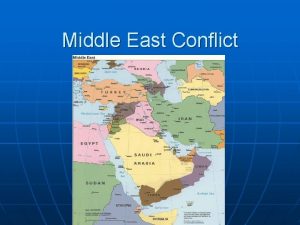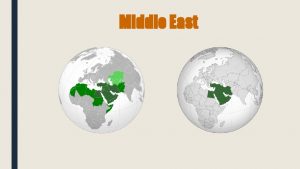Empires and Cultures of the Ancient Middle East







































- Slides: 39

Empires and Cultures of the Ancient Middle East


The Hittites created their empire between 1600 -1200 B. C. (BCE) *They were the first people to learn to smelt (separate metal from ore) iron. There were eventually weakened and defeated by the Sea Peoples.

Government Ruled by a king Heavily fortified city walls Written laws show Babylonian influence

Economy Link between Mesopotamia and western Asia Had monopoly on Armenian and European metals for hundreds of years Developed iron for tools and weapons

Iron and Technology Iron working - Hittites were the first to make wide use of iron. They invented a furnace which made iron production easier. They refused to trade their iron tools & weapons and tried to keep the process a secret

Conquest and Rule • Hittites conquered what is now Turkey and clashed with Egypt. In 1296 BC they signed the first known peace treaty with Egypt. • They built great fortifications using natural defenses. Their art adorned their buildings. • Hittite Law - Their laws also controlled their economy by setting prices and wages. Laws were less severe and more humane. Capital punishment (death) was reserved for major crimes. Premeditation was taken into account and fines were set. • Borrowed many gods and goddesses from

Hattusas: Capital of the Hittites

The ancient Hittite city of Hattusha, in Turkey.

The Hittite capital city of Hattusha

Hattusas – Lion’s Gate

The Hittite’s Three Man Chariot. Two archers and a driver in each chariot made this a fearsome offensive weapon.

The Battle of Kadesh Ramses II at Kadesh Treaty of Kadesh

Hittite Writing

A Balance of Power


The Assyrian Empire

Assyrian Military Power Assyrian soldiers carrying away the enemy’s gods.

The Assyrian Empire (1300 -612 BCE) • Became skilled in chariot warfare and began to conquer neighbors • Reign of Sennacherib (705 -681 BCE) • The Assyrian capital city: Nineveh • Palace Library • Assyrians known for brutality in warfare • Only Mesopotamian civilization to submit to a queen

New Babylonia (612 -539 BCE) • Medes and Chaldeans defeat the Assyrians in 612 BCE • Most famous Babylonian ruler was Nebuchadnezzar • The defeat of Belshazzar by the

Babylon under the Chaldeans

New Babylonia The ancient city of Babylon The Ishtar Gate The Hanging Gardens Babylonian astronomical achievements • Not “astrologers” • Babylonian court • astronomers & their diaries • •

Nebuchadnezzar II’s Babylon

Ishtar Gate

Hanging Gardens of Babylon

Hebrews/Israel • Adopted idea of monotheism • One God - Yaweh • Old Testament • 10 commandments • God demands obedience and in

Solomon’s Temple v Located in Jerusalem v Center of Jewish Religion v Housed the 10 Commandments and the Ark of the Covenant

Diaspora – the forced removal of Jews from their homeland • Hebrews migrated from Palestine due to famine and were enslaved in Egypt – freed by Moses according to Bible • Settled in Canaan and set up kingdom of Israel • Israel split up by Assyrians and Babylonians – many Jews were exiled, this was the first Diaspora (586 BC)

Jewish Captives: c 8 BCE

Persian Empire • Conquered huge empire by 500 BC • Built roads, “pony express” communication system • Lots of cultural diffusion

Persian Empire (539 BCE on) • Allowed subjects to practice native customs and religions —Cyrus the Great allowed the Jews to return to Jerusalem • Persians gave the Ancient Near East political unity and cultural diversity

The Persian Empire (cont. ) • Later Rulers: Darius & son Xerxes • Efficient administration of a huge empire • Persian Road system • Aramaic language • Wealthy and Distant Royal Absolutism • Early Persian Religion • Introduction of


Phoenician Sea Routes

A Phoenician Bireme Ship Colonized much of the Mediterranean shore, Established trading colonies and spreading their culture. The greatest colony was Carthage. From the Mediterranean, the Phoenicians moved westward, eventually discovering the Atlantic Ocean. They rounded Africa, landed in England Ireland built many cities in Western Europe and on the Atlantic coast of Africa. Became legendary traders - their wares included works of art,

The “Royal Purple” Dye v. Tyre was the major region for the purple dye industry. v. The dye was carefully extracted, a few drops at a time from the murex, a shell-fish found in the waters off of Tyre and Sidon. v. The dye was so expensive that only the rich could afford to buy the dyed fabric. v. It is because of this Phoenician fabric that we still use the expression "born in the purple" to mean one who is born rich.

Phoenician City of Byblos: “Home of the Alphabet”

Phoenician Alphabet

Carthage: Phoenicia’s Mightiest Colony
 Early empires in the ancient near east
Early empires in the ancient near east Organizational cultures often reflect national cultures
Organizational cultures often reflect national cultures How are maritime and land based empires similar
How are maritime and land based empires similar North american
North american Ancient empires jar
Ancient empires jar East is east and west is west
East is east and west is west Wind is horizontal movement of air
Wind is horizontal movement of air Middle east natural resources
Middle east natural resources Middle east countries and water
Middle east countries and water Lesson 1 physical geography of south america
Lesson 1 physical geography of south america Lesson 8 middle east and south asia
Lesson 8 middle east and south asia Nationalism in africa and the middle east
Nationalism in africa and the middle east The ancient near east
The ancient near east Ancient near east countries physical education
Ancient near east countries physical education Physical education during primitive era
Physical education during primitive era Ancient means of communication pictures
Ancient means of communication pictures Ancient india vs ancient china
Ancient india vs ancient china Ethnic groups in the middle east
Ethnic groups in the middle east Why is it called middle east
Why is it called middle east Physical features in the middle east
Physical features in the middle east Jordan river on map
Jordan river on map Physical geography of north africa
Physical geography of north africa Middle east map
Middle east map Black sea on middle east map
Black sea on middle east map Ethnic groups in the middle east
Ethnic groups in the middle east Human geography of middle east
Human geography of middle east Israel and palestine
Israel and palestine Gosforth east middle school
Gosforth east middle school Conflicts in the middle east comprehension check
Conflicts in the middle east comprehension check Chapter 18 section 4 conflicts in the middle east
Chapter 18 section 4 conflicts in the middle east Why is the middle east so dry
Why is the middle east so dry Biotime 7.0 login
Biotime 7.0 login Where is ukraine located
Where is ukraine located Middle east before islam
Middle east before islam Zoroastrianism teaching
Zoroastrianism teaching Crossroads of the world middle east
Crossroads of the world middle east Middle east before islam
Middle east before islam Ateis middle east
Ateis middle east Treaty of versailles middle east
Treaty of versailles middle east What are the three peninsulas in the middle east
What are the three peninsulas in the middle east




